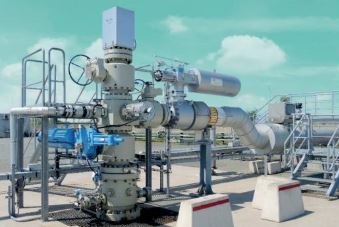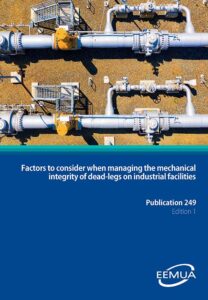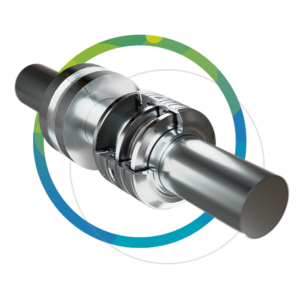The leading and only independent cavern operator in northwest Europe is preparing for underground hydrogen storage STORAG ETZEL was formerly a public enterprise under the name IVG. It was commissioned in 1971 to build an underground storage facility at Etzel, Germany, with a capacity of 10 million tonnes. This was to store crude oil as a national stockpile and to operate the aboveground facilities on behalf of the Federal Government.
Following privatisation in 1993, IVG acquired ownership of the cavern complex in 2005. In 2016, the long-established company was renamed Storag Etzel, and became largely independent.
ADVANTAGES OF THE ETZEL SITE
In the early 1970s, after a thorough exploration of the underground, the Etzel salt dome with its mushroom-shaped structure was chosen for the project. The local salt dome is about 12 km long and 5 km wide and extends from a depth of more than 4,000 m to 750 m below the surface. Hardly anywhere else in Europe are the conditions so favourable for the construction of caverns.
The site was also chosen for its proximity to the North Sea and to the Niedersachsen Jetty in Wilhelmshaven, which is some 25 km away and where the sea water pumps are installed. Here the water is taken from the sea and pumped through a pipeline to Etzel to create the caverns by solution mining the Etzel salt. By this process brine is produced and is transferred back by pipeline into the North Sea. Wilhelmshaven is also the ideal location for the only deep-water port and oil hub of Germany where the crude oil arrives by tank vessels.
The initial plans envisaged 33 caverns with an average diameter of 35 m and a height of up to 500 m. The solution mining operation first started towards the end of 1973 after preparatory work on infrastructure, pipelines and pumping stations. Until 1978, the caverns were filled to a volume of some 8 million m³.
The political decision in the late 1960s to establish a strategic oil reserve was a wise one, because in 1973 the first oil crisis occurred as a result of a reduction in crude oil supply and a subsequent increase in oil prices. This led to an economic recession and temporary driving bans on Sundays. The crude oil volumes stored at Etzel are part of Germany’s national reserve that safeguards a continuous supply of energy in case of future political crises or natural disasters in the oil-producing areas.
INCREASING IMPORTANCE OF NATURAL GAS
Since the 1980s, natural gas consumption in Germany has increased enormously, and long-term supply contracts have been secured between gas producers and German energy suppliers. To be able to supply gas in the event of pipeline problems, the Norwegian oil and gas producer Statoil signed a contract in 1986 to lease storage capacity at the Etzel site. Initially, nine existing caverns were converted to gas storage with a working gas volume of more than 500 million Nm³. In 1993, the Etzel Gas-Lager (EGL) with its surface facilities became operative and was integrated into the North European pipeline network in the following years. As technical service provider Storag Etzel is responsible for the operation of EGL.
Between 1994 and 1998, the Etzel cavern storage was enlarged by six new oil caverns as more west European stockpiling associations secured long-term lease contracts.
A seventh oil storage cavern followed in 2004 – and the total oil storage capacity reached the original volume of 10 million m³. For the first time at Etzel these new caverns were developed by deviated wells that were drilled from so-called cluster pads. This directional drilling technique became the standard for the expansion of the gas cavern field from 2007 onwards.
EXPANSION OF THE CAVERN FIELD
The existing infrastructure and permits as well as the technical expertise on site were favourable preconditions for the expansion project of the Etzel cavern storage that started in 2006. During the following years more than 30 new gas caverns were solution mined and brought into operation in the North Field and three new gas surface facilities were built at the same time in the South Field. As a result, the Etzel Cavern Storage evolved from a pure crude oil storage also to one of the major gas storage facilities in the world, centrally located in North Germany’s energy hub. Extensive infrastructure investments in plant safety and borehole integrity of oil caverns went hand in hand with the expansion.
At present 75 caverns provide a geometric storage volume of around 40 million m³ for the secure and environment-friendly storage of large quantities of oil and gas. A total of 99 caverns have been approved at the Etzel site.
GERMAN-BASED FACILITY OWNERSHIP
The caverns are owned by two cavern funds which were launched in 2008 and together they form the largest infrastructure funds in Germany. Investors come from the insurance business, pension funds and foundations. Storag Etzel is the manager of the caverns as defined in German mining law and is responsible for the operation of the caverns and associated permitting. The company owns the entire infrastructure for the operation of oil storage caverns and caverns under construction.
CAVERN TENANTS
Storag Etzel is one of Europe’s largest crude oil storage companies with some 11 million m³ of crude oil in 24 caverns for storage. The crude oil is available to stockpiling organizations of various European states in times of energy crisis. Likewise, traders have stocked up again and again in recent years.
By mid-2022 Storag Etzel will make some 5 million m³ of storage volume available for mid and long-term crude oil storage. The company offers attractive commercial conditions for customers, the caverns that are connected to the nearby oil port facilitate high flexibility in terms of storage volumes and turnovers, even on short notice. On the gas side the owners of the individual surface operational plants and the technical and commercial operators for the 51 gas caverns at the Etzel site are four consortia each comprising notable European gas supply companies. These contracts reach far into the 2040s.
FUTURE HYDROGEN STORAGE
Today the function of the Etzel cavern storage site is not only to ensure Germany´s security of supply but also to support other EU countries energy demand. Thanks to its favourable location and excellent connection to oil and gas infrastructure it represents a practical model for European cooperation.
Underground storage has proven to be an extremely cost-effective, operationally safe, flexible and environment-friendly way for energy bulk storage. Looking into the future: In addition to storing fossil fuels, like crude oil and natural gas, renewable energy can also be stored in caverns by transforming excess electricity into hydrogen (H2) or synthetic natural gas (SNG = methane).
The operator has already converted caverns from oil to gas in the past to prepare for the future; now the conversion from gas/oil to hydrogen is next on the agenda. To fulfil this ambition, Storag Etzel has set up an initiative called H2CAST Etzel.
For more information:
www.storag-etzel.de/en










